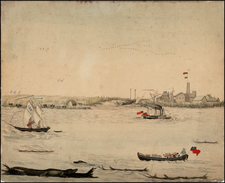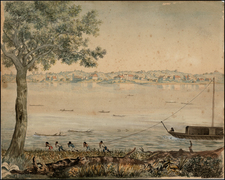Search
Duke Friedrich Paul Wilhelm of Württemberg (1797 – 1860 ) was a member of the House of Württemberg and a Duke of Württemberg.
Paul Wilhelm was a German naturalist and explorer, who in the early 19th century, undertook several expeditions in North America, North Africa, and Australia. In 1829, he discovered the sources of the Missouri River.
Between the years 1822 to 1824, Paul Wilhelm's undertook his first major research trip to Cuba and North America. He kept a diary in which he described the places he visited in great scientific and ethnological detail. An artist produced numerous images of the landscapes, plants, and animals.
Paul Wilhelm devoted himself particularly to the study North and South America. He spent time exploring the Western United States and met the son of Sacagawea, Jean Baptiste Charbonneau. After his initial meeting with Jean Baptiste Charbonneau in 1823 at the Kansas River, likely arranged by William Clark, Paul Wilhelm left camp and headed north with Great Plains veteran Toussaint Charbonneau, Jean Baptiste's father and Sacagawea's husband, hired as an interpreter.
The Duke’s party spent five months in the upper Missouri country visiting trading forts, Indian tribes, and collecting scientific data. Paul Wilhelm is traditionally included as one of the first explorers of the headwaters of the Mississippi and Missouri rivers.
As late as the 1850s, he visited Baron Ottmar von Behr, a German farmer and sheep breeder, meteorologist, and scientist living in Sisterdale, Texas. When he visited New Braunfels on an 1855 visit, artist Carl G. von Iwonski made him a gift of six pencil sketches of the artist's Texas work.


